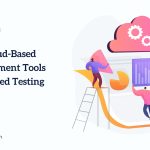In software product development, the discovery phase is very important. If you still don’t know about product discovery, then let’s start with it.
The product discovery is the foundation of the lifecycle that consists of design, development, and deployment. In the discovery phase, it has two goals that are
- Building a shared understanding of the objective of the software product by discussion, detailed research, and idea analysis
- Visualizing the scope of the software product that will move towards the product goal and create value for the users
For best practice, it is recommended to divide the whole discovery phase into two sections – first the research and then the discovery workshop.
Research – Discovery Phase 1:
Most software product or mobile app development companies prefer a workshop-style discussion session to understand the project but before that research is of much importance. Before start working on the project; it is important to define the opportunity and for that research is important. In this research segment; there are different types of analysis for example opportunity analysis, competitive analysis, and industry analysis.
Opportunity Analysis: The gap between market and scope leads to opportunities for new software. As per the economic change, trends, and technical innovation; the new software is conceived to bring out the solution.
The designated software must be useful to the users otherwise people won’t bother about it. After you define the opportunity, you need to create your set of customers so that you can market the product accordingly.
Customer Analysis: Unless there is a demand for the product among the customers, there is no use in developing a product no matter how good it is. It will give you an insight into which feature can be useful for it and which is not.
After the customer; you need to consider the market as well. You must define the opportunity for the proposed product like your value proposition, target market, size, requirements, minimum expectation, and differentiator for your software product.
Competition Analysis: Finally, you need to know about your competition. You must add some unique value to the customers that your competitors don’t have. You must cater to the customers for the specific needs for which your competitors have failed. In a nutshell, we can say that you need to stay ahead to stay relevant in this market. You need to check search engines, app stores, and reviews to find out more about the competition. The views of industry experts and tech trends reports can be the dynamic factors for any product development.
Data Analysis: A data set can be converted into a list of technical and business criteria and benchmarks through the process of information aggregation. These technologies take into account user accounts and stakeholder requirements for user journey creation and experience enhancement.
The Workshop -Discovery Part 2
The second phase of the project consists of budgeting. In this stage, the essential cost of the project is discussed. The timeline of the project is also finalized
The team will be ready with the SRS (System Requirements Specification) which is the detailed description of the projects, the goal, an overview of the architecture, and recommended technology slack. When you are ready with all the needed information; you can start the workshop with your software product development team.
Checklist for Discovery Phase:
Just like the steps of the product discovery phase, there is a checklist that is important for quality product execution.
- Client: The primary objectives of the project, research findings, marketing collateral, and the justification for any modifications are all included in this category.
- Market: Comprehensive analysis using both online and offline resources and focused on internal and external factors White papers, subscriptions, and periodicals pertaining to the industry may also be included in the resources.
- Current Alternatives: Other market offerings, such as goods and services, are among the alternatives for the present designed products. Additionally, important criteria include purchasing trends, customer service standards, interaction styles, and other elements.
- Competition Analysis: The evaluation of the competitors’ products and the sources of these products. It is beneficial to divide the competitions into primary and secondary groupings, as well as online and offline divisions. The latter enables prioritizing risks and acting quickly and effectively when they materialize.
- Target Base: User stories, demographic data, and customer avatars are included in this component.
- Market Strategy: The marketing strategy component consists of short- and long-term goals, branding, messaging, and particular tactics.
- Technical Requirements: Technical requirements primarily consist of specifications, solutions, and an updated technology package.
- Additional Data: This component enables an evaluation of the other deliverables and the identification of any potential gaps. To ensure that the checklist is thorough, it is crucial to make sure that all stakeholders are included in the process.
Conclusion:
At Appzlogic, we analyze the scope in the Discovery phase from every possible angle. A discussion and knowledge-sharing session help the technical, process, and marketing teams. A detailed analysis of the scope and market demand with a tangible outcome will define the required features for the product. We utilize the discovery phase as the risk assessment tool before the stakeholders are fully committed to the project.
It is always better to invest time before investing in the development of the software product to ensure its success of the application. At Appzlogic, we rigorously follow product discovery so that every time we can deliver a successful and efficient software product for our clients.




